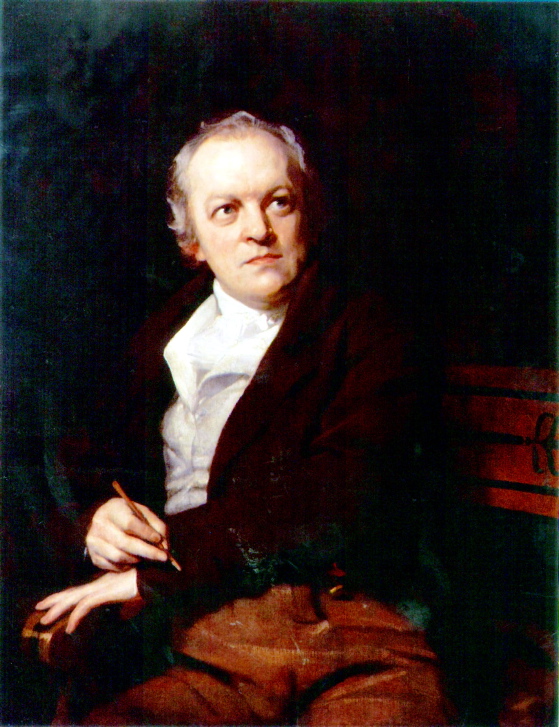
There is a smile of love,
And there is a smile of deceit,
And there is a smile of smiles
In which these two smiles meet.


There is a smile of love,
And there is a smile of deceit,
And there is a smile of smiles
In which these two smiles meet.
Fox home video has been releasing a lot of terrific DVDs in their Fox Film Noir
series — great transfers of entertaining films with generally
excellent commentaries and brief featurettes about the movies and their
creators. They're running out of films from their vaults which
can plausibly be called noir — except that these days, apparently, just about anything can plausibly be called noir.
Daisy Kenyon, the 23rd title in
the series, is an extremely interesting film by Otto Preminger from
1947 which could plausibly be called domestic noir,
though it doesn't involve crime or violence in any significant
way. It's basically a soap opera centering on a very complicated
love triangle, but it's disturbingly dark, in ways that wouldn't have been
conceivable in Hollywood before WWII.
Joan Crawford plays a career girl in New York who's having an affair
with a married man, played by Dana Andrews, a charming self-centered
lout. Neither character seems to feel any moral qualms about the
affair, and Preminger presents it with an almost cynical nonchalance
that's strikingly adult and modern.
Crawford meets an equally charming but somewhat unstable returning war
vet, played by Henry Fonda. Fonda's character feels that the
world and everyone in it has become dead, and isn't sure if this
feeling has to do with the loss of his wife in a car accident or with
his experiences in combat. The war, and its collateral moral damage, are also referenced in an off-screen subplot in which
the Andrews character defends a Nisei war vet whose farm was stolen
from him while he was off fighting for his country, heroically, in
Italy. He loses the case.
According to Preminger's biographer Foster Hirsch, these elements
were not prominent in the novel on which the film was based. It
was Preminger and his
screenwriter who chose to associate the moral confusions and neuroses
of the characters with the broader anxieties of post-war American
society, issues of guilt over the price of victory, over the
psychological wounds suffered by the soldiers who won that
victory. It's a theme one finds
in many noir and noir-inflected films of the time, sometimes explored explicitly, as it is here, sometimes only by implication.
Perhaps Preminger was too explicit. Daisy Kenyon
was a box-office disappointment. Without the cover of the
crime-thriller genre, elements of which figure to one degree or another
in most other domestic noirs, the film's investigation of post-war American angst may have cut too close to the bone for contemporary audiences.
The mood of the film is almost unbearably tense and unsettling,
eventually involving child abuse and a scandalous divorce trial played
out in the tabloid press. There had always been soap operas like
this in American movies, of course, but there was always a clear sense
of when moral boundaries were being crossed and what the consequences
would be. Daisy Kenyon plays out in a world in which moral boundaries seem to have been erased.
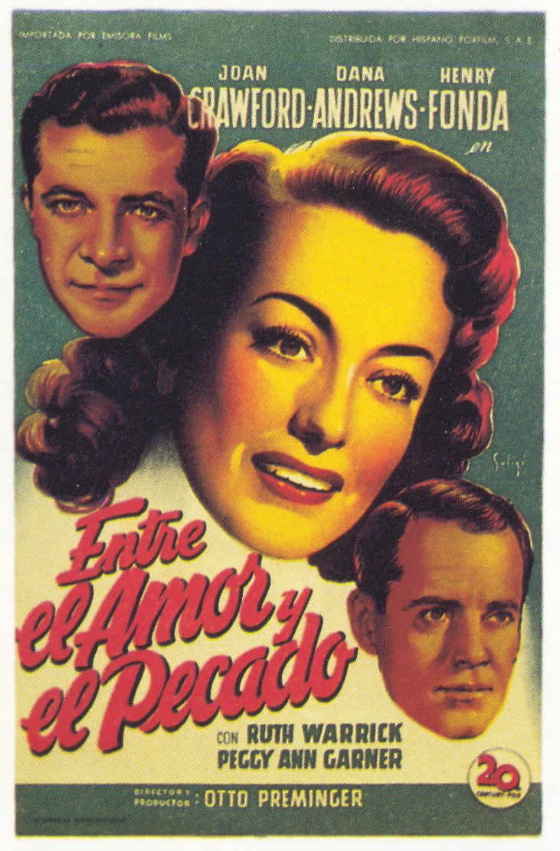
The Spanish title of the film translates as “between love and sin”
but the tale offers few clues as to where one stops and the other
begins. The romantic triangle is resolved at the end, more or
less, with everyone doing the “right” thing — but there's hardly a
sense of moral triumph. We feel that all the characters are going
to remain adrift in a morally ambiguous universe, trying to walk a line
that none of them can see clearly. This is noir territory, all
right, but strictly domestic, and explored primarily from the point of
view of the female protagonist, which distinguishes it from the classic
noir cycle.
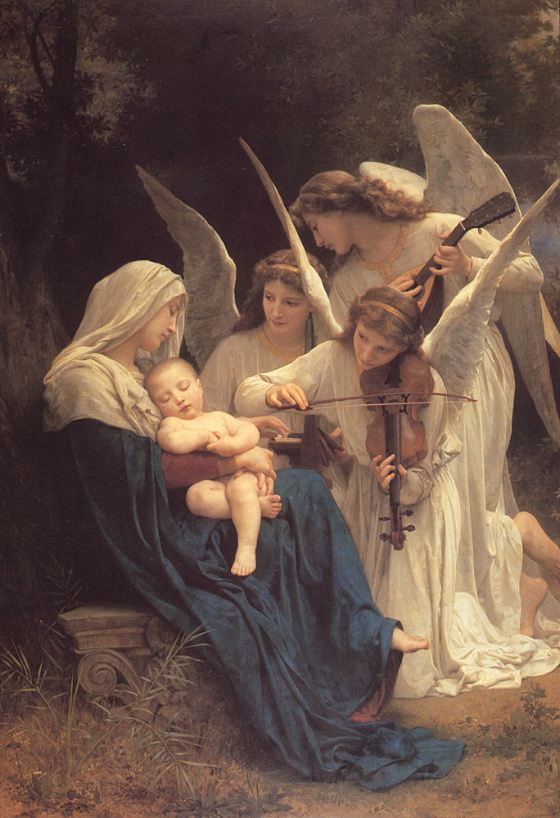
Once a poster boy for bourgeois bad taste, Bouguereau is starting to
look more and more radical — certainly more and more bizarre.
The solidity of his angels here is uncanny. The wings of angels
in art are often merely symbolic — in this image they
seem like practical appendages, as necessary to flight as a bird's
wings. They give these angels a monstrous quality, as though
they're the product of some unholy genetic experiment. On the
other hand, it may be that the sight of real angels would produce the
same impression and that real angels, if photographed, would look exactly as
they do above.
For a lengthier meditation on the work of this extraordinary artist, go here:
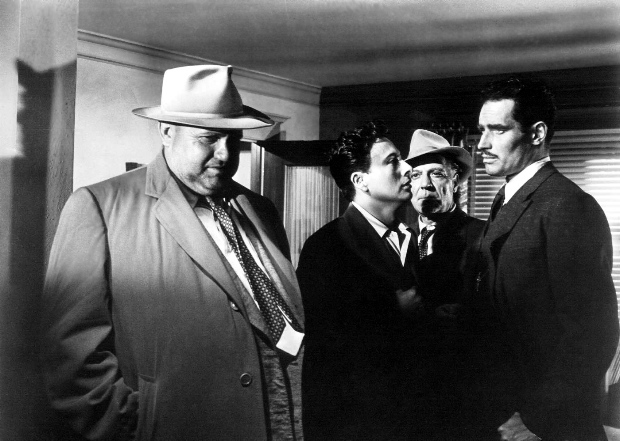
Charlton Heston has died at the age of 84. In life he never got
the appreciation he deserved — damned with faint praise as an actor of
limited range, damned in more direct terms for his right wing politics
and defense of gun rights. As an artist, however, he was a
genuine hero.
It was Heston who lobbied Universal to give Orson Welles the job as director of Touch Of Evil
(above), at a time when no one else in Hollywood would give Welles the
time of day, and he single-handedly kept Sam Peckinpah on Major Dundee by offering to kick back his own salary into the production.
In movies, presence is sometimes more important than range — one might
argue that it's always more important than range — and presence
requires more than mere personality. It requires its own kind of
craft and courage. There was no other actor of his generation who
could have held his own in El Cid, and his “presence” helped make that film a masterpiece. It also elevated The Planet Of the Apes from a B-picture to a pop classic.
I am personally grateful to him for Touch Of Evil
— mangled as it was by the studio it's still one of the great American
films, and it wouldn't exist without the artistic heroism of Charlton
Heston.
And for those of you who can't get past his efforts on behalf of the NRA,
remember that he also stood with Martin Luther King, Jr. at the March
On Washington — one of the few Hollywood celebrities with the guts to
take a public stand like that in 1963.
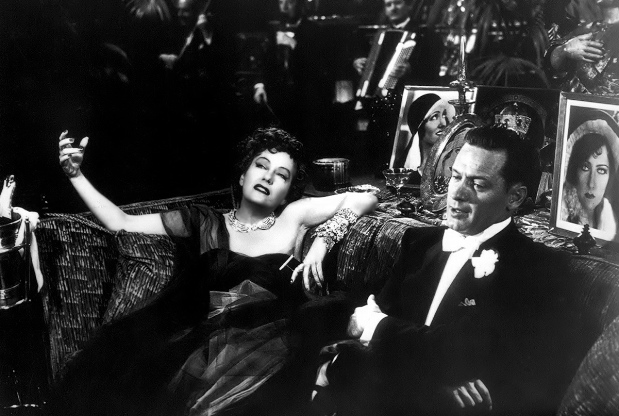
Here's link, via Boing Boing, to a collection of Mike Wallace interviews from the 50s, including one with Gloria Swanson:
The Mike Wallace Interview Archive
Wallace's
technique was to get as close to insolence with his guests, especially
his female guests, as possible without crossing the line into
rudeness. The lack of respect he shows to Swanson is sickening
and she barely keeps her dignity intact. Swanson observes that
“something has gone dreadfully wrong with the American man,” and
Wallace, puffing away on a cigarette throughout the program, proves her
point.
There's also a
touching interview with Jean Seberg, age 19, just after the disaster of
her performance in Saint Joan, her first film, in which Seberg, too, struggles,
somewhat more successfully, to keep her dignity in the face of
Wallace's insinuating smugness. “What will happen to your
career,” Wallace asks, “when it comes time for you to get married and
devote most of your time to your family?” “I hope I'll marry a
man who lets me continue with my career,” says Seberg, looking slightly
bewildered by Wallace's attitude.
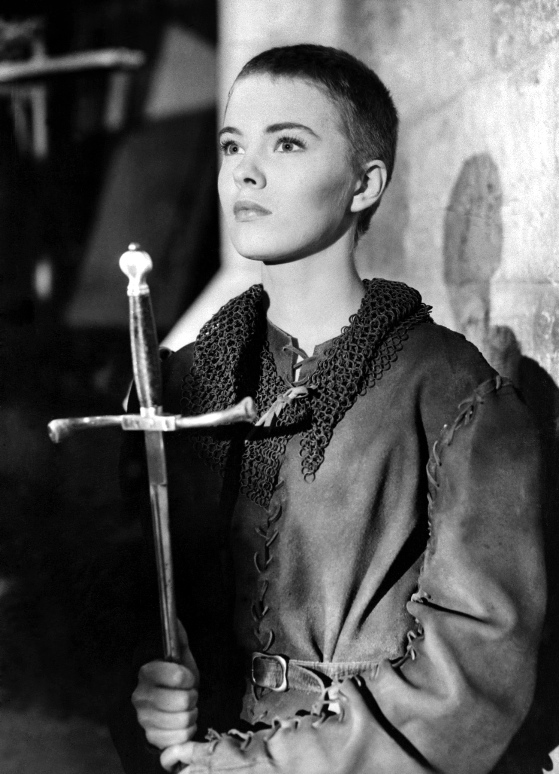
The two great
stars, speaking from different ends of their careers, manage to make
Wallace's cigarettes look like accurately-sized phallic symbols.
What we're seeing in these interviews is the birth of modern
journalism, in which hacks try to elevate themselves by patronizing
their betters, treating their accomplishments as the same sort of
hollow flim-flam the hacks are practicing.
What we're also
seeing is further proof that modern feminism was a response not to an
over-powerful patriarchy, but to a patriarchy in full-on psychic
collapse. Wallace comes off here as a truly pathetic figure.
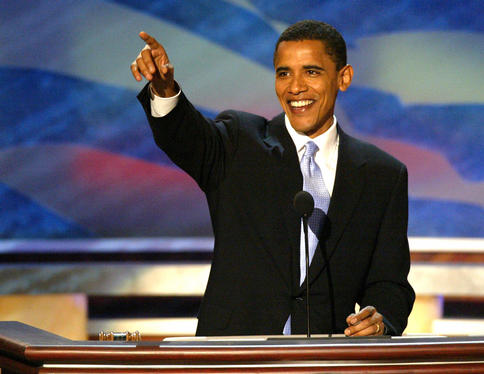
Frustrated by reports that the Clinton campaign is arguing to Super Delegates in
private that Barack Obama “can’t win” in November — presumably because
he’s black — some Obama surrogates have countered with the argument,
also expressed privately but widely reported, that Senator Clinton can’t win in November
because she’s an asshole.
The attempt seems to be to associate Clinton with unpopular Republican
Presidents who are generally seen as assholes — like Richard Nixon and George
Bush. Clinton supporters have been quick to point out that Bill
Clinton, still a popular figure in Democratic circles, was also an
asshole, but still managed to balance the budget and keep America safe.
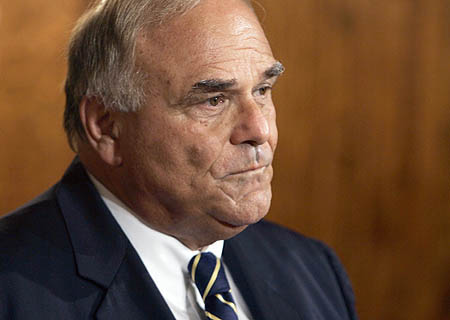
Other Clinton backers expressed outrage over the Obama tactics.
“Hillary Clinton can’t help being an asshole,” said Governor Ed Rendell
of Pennsylvania, “anymore than Barack Obama can help being a
Negro. Criticizing a person on the basis of some inherent characteristic
demeans the public debate.” In response to questioning, Rendell
said that “Negro” was not a term he normally used himself, “though it
does reflect the language of many voters in my state, who may not be
ready to vote for a person they see as an uppity jigaboo. Naturally,” he added, “that attitude doesn’t reflect my personal views.” Reporters said that Rendell winked repeatedly at the camera during these remarks, though an aide later explained that the
Governor had simply gotten something in his eye.

CNN political analyst David Gergen warned that the Obama argument could
backfire. “Assholes make up a significant percentage of the
American electorate,” he said. “Naturally, they’re attracted to a
candidate who is also an asshole and sensitive to attacks on that
candidate, whom they perceive as ‘like them’. Barack Obama can’t
win the Presidency if he totally alienates the asshole vote, which
could determine the outcome in many swing states, like Florida.”
Obama’s only comment on the controversy — “American politics has no
place for assholes” — has struck many observers as ambiguous, at best.
In 1920, Roscoe Arbuckle became the first great comedian of the silent screen to make a full-on transition from shorts to feature films. Chaplin had appeared in the feature comedy Tillie’s Punctured Romance as early as 1914, but under Mack Sennett’s direction and as a second lead. Chaplin wouldn’t release his own first feature until 1921. Buster Keaton starred in The Saphead in 1920 but he continued to make shorts after that until 1923, when his feature career began in earnest with Three Ages.
Arbuckle made nine feature films in the two years before scandal interrupted
his career, and never appeared in another. I believe that all but three
of them are lost, and the last two were never released in America, due
to the scandal. One of these, Leap Year, survives and is included on
the magnificent DVD set The Forgotten Films Of Fatty Arbuckle. It’s
absolutely fascinating.
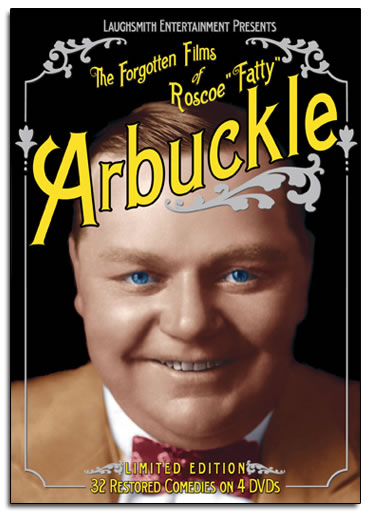
In the earlier shorts offered in the collection we can see Arbuckle
transition slowly from the comic actor of the Sennett farces to the
full-blown silent clown of the Comiques. Chaplin and Keaton seemed to
have intuited almost from the moment they stepped in front of a camera
that the silent cinema was perfectly adapted to a fixed clown persona
— a character who could migrate from film to film yet still stay
essentially the same, with a way of moving, of being in space, that,
along with a few clothing props, singled him out as a distinct,
slightly hyper-real being, much like a circus clown or a figure from
the Commedia dell’ Arte.
Roscoe moved slowly from being a comic actor who did funny physical bits to
incarnating “Fatty”, the slapstick clown, and all along the journey he
was pulled back to the former mode. In the films he did with Mabel
Normand, character, especially as embodied in their relationship, took
precedence over slapstick — at least until the trademark Sennett
mayhem of the climax. In one of the Sennett films Roscoe directed, He
Did and He Didn’t, he takes this mode even further, edging into the
realm of upper-class drawing-room comedy, with very sophisticated
lighting and photography.
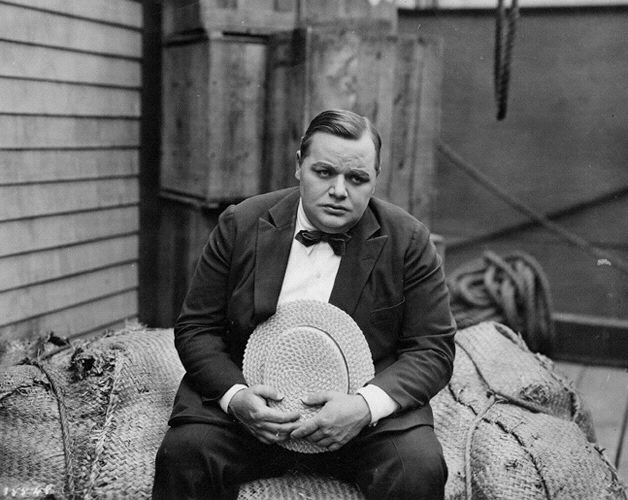
Until I saw Leap Year I would have seen this mode as a detour in Arbuckle’s
development as a comedian — a detour on the road to the Comiques,
where Arbuckle takes his place with Keaton and Chaplin as a classic
slapstick clown. Leap Year, though, totally altered my sense of what
Arbuckle was about. It’s as far from the universe of the Comiques as
it’s possible to get.
It inhabits, in fact, the universe of P. G. Wodehouse, whose gentle,
kindly satires of the young and well-heeled beautiful people of his
time were immensely popular in 1920. Leap Year perfectly captures the
sweetly daft world of Wodehouse’s slightly nutty, vaguely dimwitted but
immensely lovable trust-fund kids of the jazz age.
The miracle of it is that Arbuckle, knockabout comedian extraordinaire,
funny slapstick fat guy, fits so perfectly into this world. He does it
by simply behaving as though he’s Cary Grant in a romantic comedy, Fred
Astaire in a romantic musical — and because he doesn’t doubt it for a
moment, neither do we.
Roscoe plays the feckless nephew of a rich man, presumably the heir to a vast
fortune. This could explain part of the reason he’s so irresistible to
the women in the film — but not all of it. He’s a genuinely romantic
leading man. His sweetness and his physical grace sell us on that. He
just dances through the role.
The film doesn’t allow for much slapstick, but Arbuckle finds ways of
slipping it in delightfully here and there — most notably in a scene in which he’s
trying to convince his would-be brides that he’s having fits. The fits
are little masterpieces of physical comedy, as fine as anything Chaplin
and Keaton were capable of at their best.
But the performance doesn’t depend on these things, and the film remains a
frothy drawing-room farce. The farce becomes strained at times,
particularly towards the end, and the froth congeals a bit, but the
overall effect is of lightness and joy. It reminded me a little of
Murnau’s The Finances Of the Archduke from 1924 — particularly in
its use of the sunny Catalina settings of the film’s middle section, in
which the landscape seems to conspire in the fun, as the Dalmatian
coast did in Murnau’s film..
Was this really the sort of film that the mad surreal clown of the Comiques
wanted to make? He certainly seems to be fully committed to the work
and having a hell of a good time. Were the other Arbuckle features
anything like this? If Arbuckle’s career had continued on its natural
course, and he’d taken greater command over his films as a director —
where on earth would he have ended up?
This film expanded my appreciation of Arbuckle’s range and genius and
altered my sense of the comic landscape of films in 1920. It’s easy to
think of Arbuckle as an actor whose journey towards becoming another
Chaplin, another Keaton, was tragically diverted. But maybe he would
have become something else entirely — something we can’t even imagine,
because he wasn’t able to show it to us.
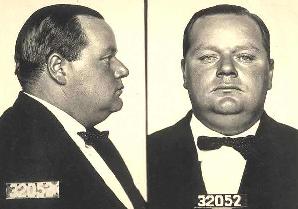

Jules Bastien-Lepage died tragically young, in 1884, when he was in his late thirties. He painted one masterpiece, Joan Listening To the Voices (above),
which now hangs in the Metropolitan Museum of Art in New York.
It's impossible to describe the effect of this large canvas, with its
complex and convincing illusion of space, which Joan seems about to step out of,
prompted forward by her visions. It's an example of a
photo-realistic technique enlisted in the service of mystical drama.
Bastien-Lepage groped about a bit in his short career, with stylized
works of grandiose ambition that seem clumsy and pretentious and
modest genre paintings that seem trite, but his über-photographic style
could occasionally produce miracles, like this extraordinary portrait of Sarah Bernhardt,
which has the quality of a bas-relief:
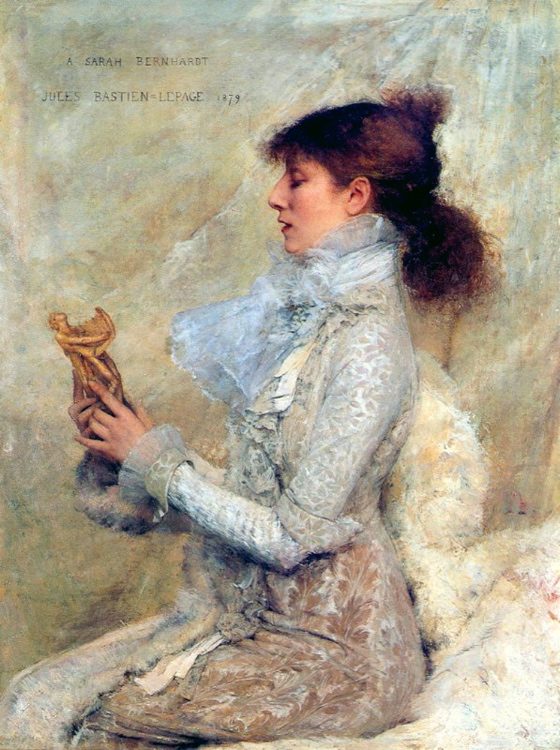
No other evocation of Bernhardt, in literature, art or photography,
brings us as close as Bastien-Lepage's portrait does to the charisma of
the great artist. Nadar's photographs of the young actress
humanize her, touch the heart — Bastien-Lepage's portrait records the
determined audacity of her genius. She seems powerful and
vulnerable at the same time, part of the alchemy of a star.
The American sculptor Augustus Saint-Gaudens did a remarkable
bas-relief portrait of Bastien-Lepage in bronze, which makes a fine
pendant to Bastien-Lepage's portrait of Bernhardt — both have a
tactile grace that takes the breath away, both summon their subjects into
our immediate presence, obliterating time and mortality:
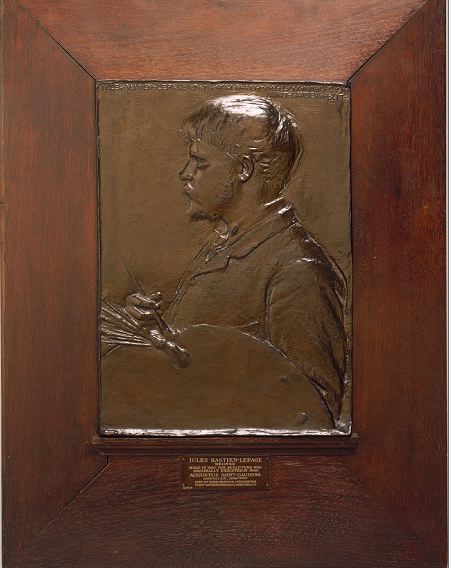
Yesterday, Showtime screened a rough assembly of Orson Welles' legendary uncompleted film The Other Side Of the Wind,
which Peter Bogdanovich is restoring for the cable channel. The
select group of critics in attendance were stunned to find that the
film bore no relation whatsoever to the brief excerpts from the film or
to the script pages which have previously seen the light of day.
The film unveiled was in fact a shot-by-shot remake of Citizen Kane using sock-puppets in place of the original actors. Citizen Kane
is considered Welles' masterpiece, and many have pronounced it the
greatest movie ever made — a stunning debut which Welles never managed
to live up to in the course of his subsequent career.
Bogdanovich explained the “very Wellesian” ruse involved — “He shot
fake footage and wrote a bogus script to keep his real plans a
secret. 'Everybody wants another Kane,' he told me, 'so I'm going to give it to them. I'm going to shove it up their ass.'”
Bogdanovich believes that the sock-puppet Kane
will eventually be recognized as a greater work than the original —
“though it may take awhile. Orson was always years ahead of his
time.”
Bogdanovich hopes that the restoration of the Kane
remake will be completed towards the end of this year and screened by
Showtime in 2009. It will appear under the name Welles chose for
it shortly before his death — Kane You Believe It?
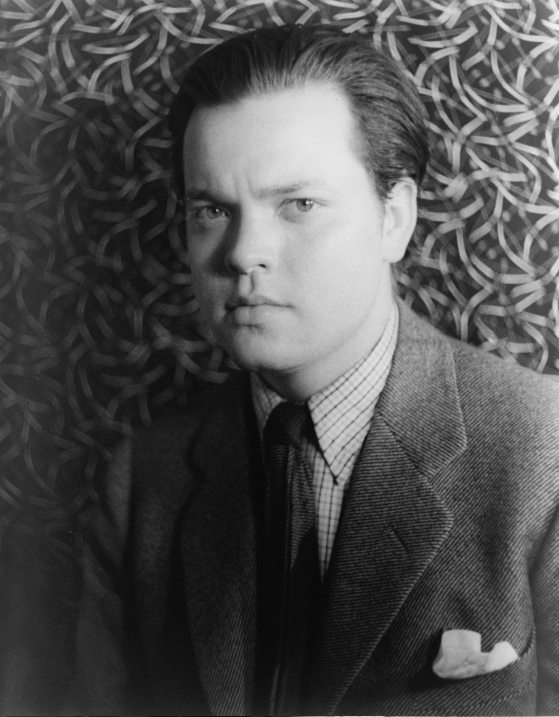
[Photo by Carl Van Vechten]
The
poetry of a play by Shakespeare is characterized by an almost
supernatural density of imagery and invention, wordplay, wit and
insight. Though designed to fly by in two hours' traffic
upon a stage it simply cannot be absorbed fully on a single hearing or
reading, composed as it is of a torrent of miraculous phrases and passages that
repay continual study. The sheer abundance, the sheer generosity
of it is overwhelming.
Orson Welles completed three films based on Shakespeare plays — Macbeth, Othello and Falstaff (Chimes At Midnight).
His interest, as it became clear over time, was not simply in mounting the plays within the cinematic
medium but pushing the medium to supply a cinematic equivalent to
Shakespeare's poetry. In Falstaff,
I would argue, he finally succeeded in this ambition. In the
process he completely rethought the approach to cinema he employed in
his early masterpieces Citizen Kane and The Magnificent Ambersons.
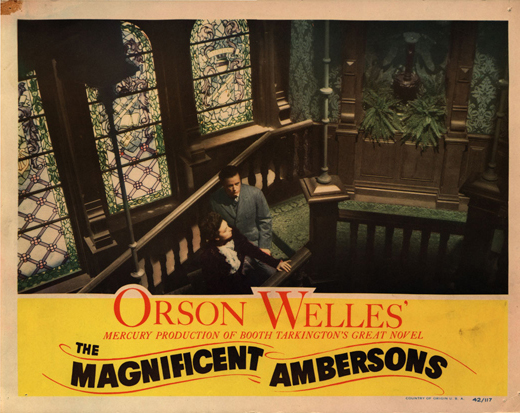
Citizen Kane, though
dominated aesthetically by scenes shot in deep focus and playing in
long takes, in fact employs a grab-bag of cinematic techniques —
process shots involving backscreen projection, models and matte
paintings, double-exposures, faked newsreel footage. In The Magnificent Ambersons,
Welles experimented with even longer and more elaborately choreographed
single-take scenes, some of which were cut up by Robert Wise at the
behest of RKO when they took the film away from Welles — but Welles
also included pictorial trick shots that violate the aesthetic of the
single-take scenes.
With The Stranger, Welles was
trying to work within the boundaries of a more conventional studio style,
but he eschewed trick shots almost entirely and included one long,
stunning single-take scene made with a crane on tracks in a forest. In The Lady From Shanghai
he tried his best to stick to location photography and to incorporate
long single-take scenes, but the film was so meddled with by Columbia
that we don't have a clear record of Welles's vision for the film as a whole.

All this was prelude to his first Shakespeare adaptation for film, Macbeth,
made cheaply and quickly for Republic Pictures. The 23-day
shooting schedule meant that Welles had to limit his technical
ambitions for the film. His increasing fascination with long
single-take scenes resulted in one extraordinary feat — a
10-minute shot which records the entire episode leading up to and including the murder of Duncan
and the arrival of Macduff, who discovers the crime. It plays
out on several levels of the studio set, covered by pans, tracks and
crane moves.
There are two other less extraordinary single-take scenes of some
length. One records the episode in which Macduff learns of the
deaths of all his “pretty ones”. This is taken from a fixed
camera position on a studio-exterior set without great spatial
interest. The four actors involved move about in ways that often
feel arbitrary in order to create different groupings of the characters
and heighten the complexity of the shot. The other shot records the
scene in which Macbeth, on the parapet of Dunsinane, learns of the
approach of Macduff and his armies and then moves inside to discuss
Lady Macbeth's mental health with her doctor. Again, the studio
sets here don't offer much spatial complexity and the choreography is not
especially dynamic.
Two shorter scenes involving dynamic camera moves are more
powerful. In one, the camera starts on a close-up of Macbeth, left
alone in the banqueting hall, and moves with him, pulling back, as he
races outdoors to the top of a rock and summons the weird
sisters. This is followed shortly by a high crane shot that swoops down
slowly onto the figure of Macbeth and ends in a close-up on his
upturned face.
The rest of the film employs a more conventional editing of shorter
shots. Some of these shots are visually arresting, involving
dynamic camera moves and angles, but many more are merely
utilitarian. There are a few interpolated shots taken on real
exteriors, a couple of shots employing matte paintings and, in the
final battle scene, a series of shots manipulated with optical
zooms. Taken as a whole, the visual strategy of the film is
chaotic.
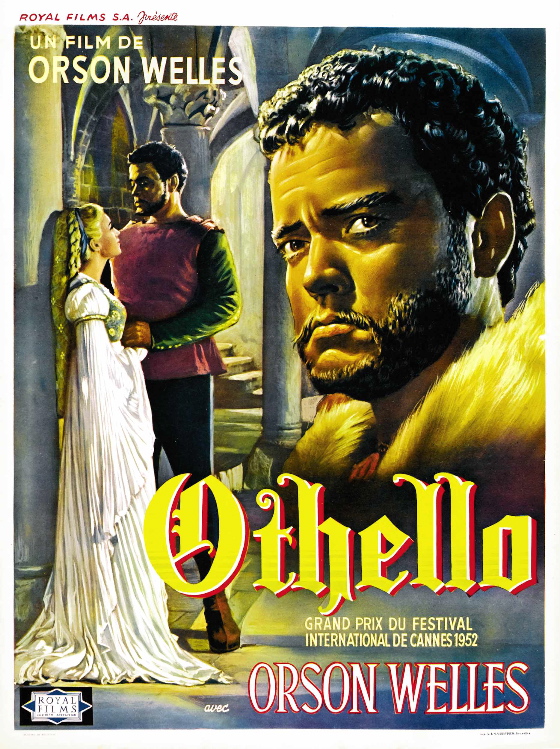
When he came to make Othello
a
few years later, Welles said he planned to shoot it all on built sets
and in long takes — making it, in effect, an extension of the approach
he took with the long single-take studio-bound scenes in Macbeth. He had been disappointed with the execution of the sets he designed for Macbeth, which do indeed look pretty cheesy most of the time — but he had a superb designer for Othello, Alexander Trauner, who sketched out elaborate sets for the film, meant to
be built at the Victorine Studio in Nice. Welles was thrilled
with the sets Trauner envisioned and always spoke of them wistfully in
later years.
All of Welles' plans for Othello had to be abandoned, however, when the film's
original financing fell through. Welles could only afford to
shoot in real locations, few of which were suitable for the entirety
of a given scene. In addition, limitations on equipment and the size of the crew
meant that he could not shoot long takes, which, as he explained,
require the technical resources of a large studio production unit.
These problems altered Welles' whole aesthetic approach to the film,
since he would not only have to use short takes more or less exclusively but he
would also have to match shots taken in disparate locations within a
single scene.
His response was masterful. He concentrated the full power of his
visual imagination on the individual shots — almost all of which, however brief, record
deep, dynamic spaces and boldly choreographed movement — and used rhythmic, musical editing in an attempt to unify them
into a coherent artistic whole.
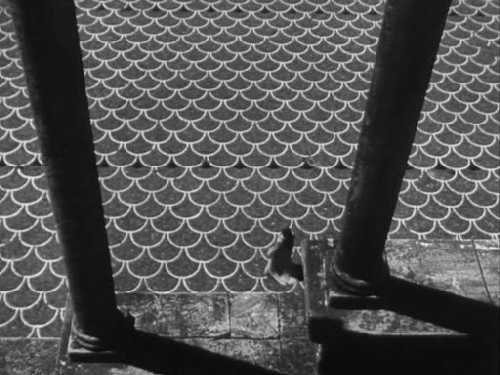
The result was impressive but not uniformly successful. Clearly Welles was improvising
from day to day, sometimes desperately — the production was halted on numerous occasions when
funds ran out, necessitating changes of locale and the loss of actors
due to conflicting commitments. The “music” of the editing was
something Welles could not always control expressively — often he was
just trying to keep the beat, to bridge extreme gaps in continuity.
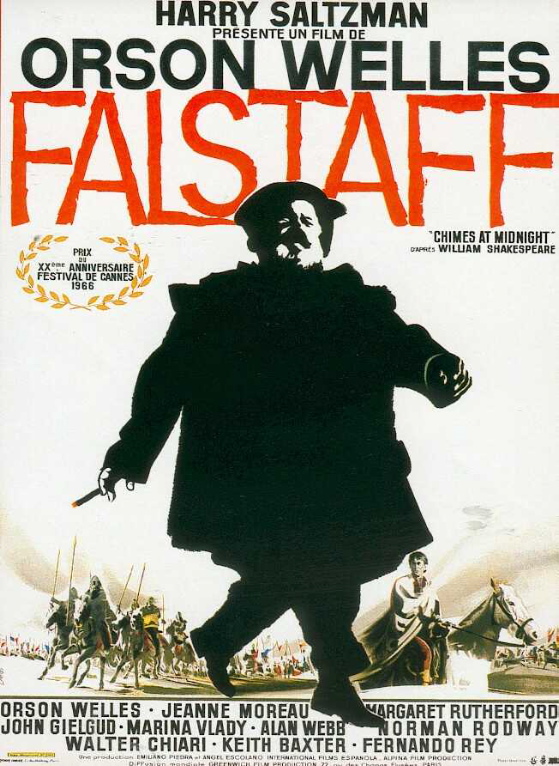
But necessity had led him to new possibilities of invention. He would deploy them spectacularly in Falstaff.
In that film he would shoot to the music of the editing he
envisioned, without the technical vexations created by Othello's near-fatal financial emergencies. There would be no long, virtuoso single-take scenes
but each shot would be dense, beautifully choreographed, with its own
dynamic spatial complexity. These shots would be utterly
involving in themselves
— and Welles would be able to preserve a sense of spatial continuity
from shot to shot to a degree that had not been possible on Othello — but the images would flow by with a relentless momentum, regulated by the metric of the editing.
Welles would not linger on the rich poetry of his individual shots but
race through them — as Shakespeare races through the rich poetry of his texts.
The great battle scene in the film offers the most extraordinary
vindication of Welles's approach. Though made up of scores of
short shots, each is like a film within a film — bold, dynamic,
involving. You feel you could linger on every one of them
indefinitely.
When he was 19, Welles wrote this about Shakespeare — “His
language is starlight and fireflies and the sun and the moon. He
wrote it with tears and blood and beer, and his words march like
heartbeats.” It's not too much to say that in the images of Falstaff Welles found a cinematic equivalent to Shakespeare's poetry — a true visual complement.
Which is to say that Welles took cinema as far, or nearly as far, as Shakespeare took the
English language — and that's as far as anyone has ever taken it.
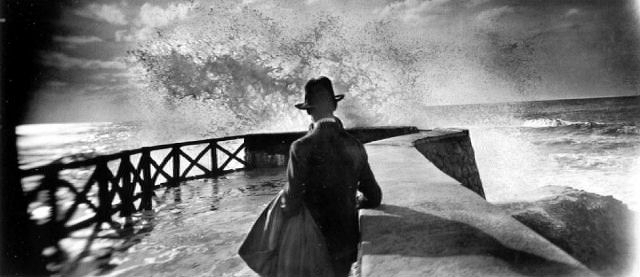
This image enchants me in a delirious sort of way.

George Marshall was one of the greatest of all Americans — the
organizer of victory in WWII, the rebuilder of Europe after the war,
the only professional soldier who has ever won the Nobel Peace Prize.
He was also the most boring of great Americans, a man who never sought
glory, who concentrated on practical matters, who made the glory of
others possible. But he was a deep thinker about war.
“Military power wins battles,” he said, “but spiritual power wins
wars.” He was the anti-Rumsfeld. Two weeks after America
entered WWII Marshall set up a commission to plan for the occupation of
Germany and Japan, realizing how easy it would be to win the war but
lose the peace, as we have done in Iraq. In 1945 he urged his
generals to end the war as quickly as possible, afraid that extending
our government on a war footing, with its attendant centralized wartime
powers, would erode America's habits of democracy.
We need to remember him now — remember what our country has forgotten
in its “war on terror”. Our only hope in this war is spiritual
power.
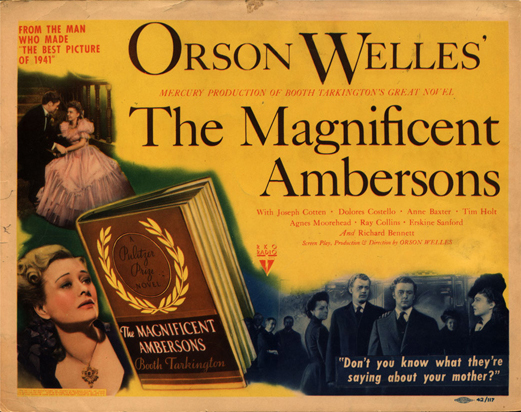
Here's some interesting and possibly hopeful news from Wellesnet,
the invaluable web site resource for all things Orson Welles. It
seems that Beatrice Welles, Orson Welles' daughter and one of his
heirs, made a legal claim against Turner Entertainment over the rights
to The Magnificent Ambersons and a couple of other films. Court documents tracked down by Wellesnet reveal that the claims with regard to Ambersons have been settled. This may explain why Ambersons
has not yet appeared on DVD in the U. S. and may be a sign that it will
be coming soon. Let's hope. This is one of the greatest
films not
yet available in the format in this country. Others are:
Greed
The Big Parade
The Merry Widow (silent version)
The Wedding March
City Girl
Falstaff (Chimes At Midnight)
Comanche Station
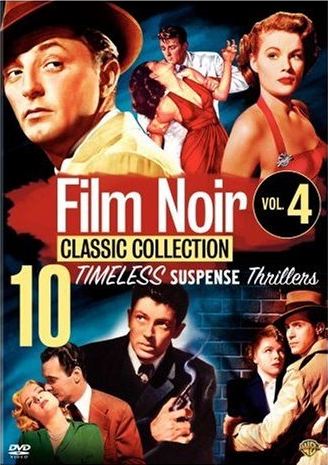
Volume 4 of Warner's Film Noir Classic Collection
is currently on sale for $29.99 all-in from Amazon — no sales tax, of course, and no
shipping charges (if you choose Super Saver Shipping). Ten films,
all interesting, including several noir classics and one masterpiece, They Live By Night — for less than $3 a film. Entertainment doesn't get much cheaper than this.
[Photo © 1960 William Klein]
An excerpt from a 2000 profile of Jean-Luc Godard by Richard Brody in The New Yorker:
During our interview, Godard referred
to the New Wave not only as “liberating” but also as
“conservative.” On the one hand, he and his friends saw
themselves as a resistance movement against “the occupation of the
cinema by people who had no business there.” On the other, this
movement had been born in a museum, the Cinémathèque: Godard and his
peers were steeping themselves in a cinematic tradition — that of
silent films — that had disappeared almost everywhere else.
Thus, from the beginning, Godard saw the cinema as a lost paradise that
had to be reclaimed.
If love of the silent cinema doesn't point the way to new, revolutionary
work — as love of ancient Greek art sparked the innovations of the
Renaissance — then it's just hobbyism.
In other words, silent cinema can be alive as a cultural force, as it
was for the young French cinéastes of the Fifties, just as ancient Greek
art was alive for the artists of the Renaissance.
The parade has not gone by.